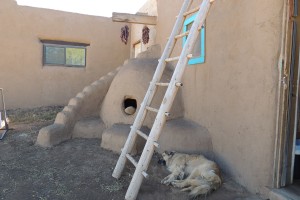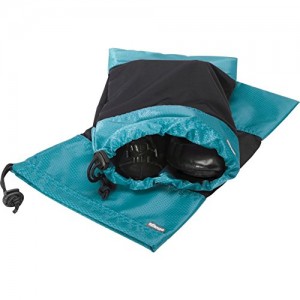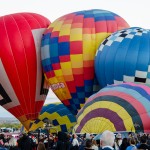China is one of the world’s most fascinating travel destinations, both for a look into its past and for a chance to ponder its future. China’s evolution from the oppressive Mao years to the current rampant consumerism may be one of the most amazing transitions in human history. This country is changing faster than any place on earth, so it’s important to go now before any more of its history disappears.
Here are the top reasons to visit China now:

Beijing
Beijing is the historic heart of China where courtyard homes still line old, narrow alleyways called hutongs and a traditional way of life continues despite the constant threat of redevelopment. The capital city also contains many sites essential to understanding this sometimes baffling country.
Begin at the Forbidden City, an impressive palace complex built in the early 1400’s where twenty-four emperors ruled for 500 years. Hidden from view behind imposing walls and a deep moat lies a totally different world of marble bridges, tranquil gardens, and thousands of rooms once used to house the emperors and their households. The Forbidden City was designed according to feng shui principles with red buildings (for luck) topped with yellow roofs (for power). Common people were not permitted to enter, and many of the royals rarely ventured out. Why would they have any desire to leave? After all, of the 10,000 people who once lived here, 3,000 were concubines.
Tiananmen Square fulfilled Chairman Mao’s dream of creating the largest and most spectacular square in the world. Designed to hold 500,000 people, it’s easy to envision the intimidating military displays regularly performed here during the days of the Cultural Revolution. The site also evokes memories of the hundreds killed by government troops during the 1989 student protests. But today, the most common sight is the street vendors hawking cheap Mao wristwatches, with the Chairman pounding out the seconds with his fist. If you want one, be sure to bargain hard!
The Summer Palace is a gorgeous spot outside the city where the royals went to escape the summer heat. While The Forbidden City was all about power and impressing visitors, this summer retreat was a pure pleasure palace. Don’t miss the Marble Boat down by the lake. This “boat” that looks more like a boat-shaped marble pier, was built by the crazy Empress Cixi with funds supposed to be used to modernize the Navy.

The Great Wall
Reputedly 5500 miles long, The Great Wall is considered one of the wonders of the world and is China’s number one tourist attraction. The Chinese have a saying, “You are not a real man until you have climbed the Great Wall.”
The Great Wall is simply awesome, a truly unbelievable engineering feat. The 12-foot wide wall has crenellated sides like the edges of a huge castle, a height that varies between 20 to 30 feet depending on the terrain, with scenic watchtowers strategically placed all along the route. The wall itself is impressive enough, but to build it in this unforgiving terrain seems insane. At least one million slaves and prisoners of war worked on the project. Walking from watchtower to watchtower is an incredible way to see the beauty of the country while participating in an activity that you can brag to your friends about for years!

Xi’an
Discovered in 1974 by Chinese farmers drilling for a well, The Terracotta Warriors are one of the most significant archaeological excavations of the 20th century and the highlight of any visit to Xi’an. Qin Shi Huang, China’s first emperor, was obsessed with the hereafter. To ensure that he would continue the sweet life of commander-in-chief even after his death, he had his minions create a terracotta army made from local clay baked in a kiln. This effort resulted in thousands of warlike, life-sized soldiers with weapons in hand, decked out in full battle armor, and positioned in military formation.
The Warriors are housed in 3 separate buildings (“creatively” named Pits #1, # 2, and #3). Each pit is an unfinished archeological work in progress, with many of the soldiers and other artifacts still in the process of being discovered. It is estimated that 6,000 soldiers will be unearthed in Pit #1 alone. Walk around the periphery of the excavations to observe the details of each soldier and horse. Remarkably, no two soldiers are alike – you’ll see different faces, heights, and statures along with a variety of mustaches and hairstyles. Each soldier’s head is actually a separately molded piece that fits together with the body, like inserting a peg into a hole. The idea was to provide the soldiers with a wider range of motion so they could turn their heads during battles in the afterlife.
Xi’an offers more than just clay warriors, and even if you are not usually into song and dance, you should check out the Tang Dynasty Show. This extravaganza features wildly colorful stage sets and elaborate costumes. Plus a fascinating musical mix of unusual Chinese instruments and dancing that is the definition of graceful, especially when the female dancers wave their long, drooping sleeves like ribbons in the wind.

Food fit for an emperor
If your knowledge of Chinese food is limited to your neighborhood take-out place, you haven’t begun to appreciate this complex cuisine. Chinese dishes are varied, healthy, always a treat for the senses, and each region glories in its own specialties.
Ancient chestnut trees still grow near The Great Wall, and these wonderfully chewy nuts are the star of savory dishes. Xi’an has a longstanding dumpling tradition and eating a “dumpling dinner” ranks right up there with seeing the Terracotta Warriors as a Xi’an must-do. Wooden steamer bowls are spread out on your table, each one holding several beautifully presented dumplings. The paper-thin wrappings conceal ingredients such as chicken, vegetables, fish, and even walnuts. One of the most loved foods in China, dumplings are delicate works of art often shaped to look like animals or flowers – a delight to the eye and the tummy. And don’t forget to sample the fragrant Chinese teas. Some of the more elaborate teas even open up like a flower unfolding in your glass.
Beijing is renowned for Peking Duck, a roasted duck dish that was a favorite in the Imperial Court. The lean and crispy duck arrives at your table intact where it is expertly sliced in front of you. Then, you go to work creating the equivalent of a Chinese taco: spread some plum sauce on a steamed pancake and add succulent slices of duck, some scallions, and cucumber slices. Now down it all with a cold Tsingtao beer. Hao chi! (Delicious!)

Shanghai
Shanghai is a city of contrasts where east meets west, and an historic waterfront faces off with a modern, neon skyline. Shanghai is at its most romantic along The Bund, a sublime riverside walkway and people-watching paradise. This part of Shanghai feels almost European with many buildings unchanged since the 1930’s when Shanghai and The Bund became the chief shipping, trading, and financial district for the colonial powers (Great Britain, France and the U.S.). In those days, Shanghai was considered the Wall Street of Asia. A walk along the 1-mile promenade reveals why The Bund has been called a “museum of international architecture” with a mix of architectural styles including a number of exceptional Art Deco structures.
The architectural delights of The Bund compete with the marvelous modern structures of the area called Pudong, directly across the Huangpu River. While The Bund holds on to its colonial heritage, Pudong is bright and brassy, clearly demonstrating the power and financial might of the new Shanghai. At night , the Pudong skyline is a neon fantasyland from the crystalline rooftop of the Jin Mao Tower to the Chinese Oriental Pearl Tower that looks like it swallowed two giant Christmas balls.
The people of Shanghai are as shockingly modern as the skyscrapers of Pudong. Designer clothes are de rigueur, and shopping seems to be the principal pastime. The tranquil Yu Yuan Gardens provides a peaceful respite from the bustle of the city. And the pearl shops nearby offer an astounding selection of these lustrous gems.

An unexpected welcome
The best reason to visit China now is because foreigners are still a novelty. At first, you may feel uncomfortable with the way that the Chinese stare at you — like you are the most exotic animal in the zoo. But you need to understand that many Chinese tourists are traveling from their homes in the provinces for the first time, and some have never seen a western face before.
You may find yourself surprisingly popular. When visiting China, you may be amazed when Chinese tourists at breathtaking sites like the Temple of Heaven or The Great Wall want to take pictures of you. Some of your favorite memories of China may be these fun picture-taking interactions.
It is hard to believe that the Cultural Revolution ended just two generations ago. Throughout China, young people seek out foreigners to show-off their fluent English, and little school children jump up and down yelling, “Hallo! Hallo!” whenever they see western tourists. In general, China is much friendlier than you would expect. As new generations emerge, the old antagonism towards the West seems long forgotten, and the deep suspicion of foreigners that Mao encouraged is nowhere in sight.
edited from BootsnAll








































